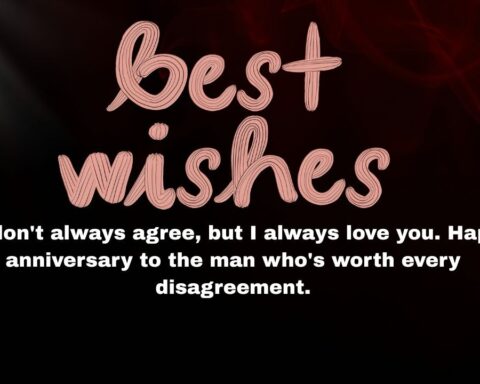Before a customer shakes your hand, browses your shelves, or hears your pitch, they’ve already formed an opinion about your business. That opinion often begins the moment they spot your storefront, and for many businesses, the humble banner is the very first thing they see. Whether it’s announcing a sale, highlighting a grand opening, or simply displaying your company name, a banner is far more than decoration: it’s your opening line in the ongoing conversation between brand and customer. In cities with competitive markets, like Alberta’s capital, businesses often rely on banner printing Edmonton services to make that first impression unforgettable.
But why do banners matter so much in the modern world, where digital ads and social media dominate? The truth is that physical, visual cues remain one of the most powerful drivers of perception and action. Let’s dive deeper into why your banner might just be the unsung hero of your business’s identity.
The Psychology of First Impressions
We’ve all heard the saying: “You never get a second chance to make a first impression.” In business, this rings especially true. Studies in consumer psychology suggest that people form impressions within seven seconds of encountering a brand. In that blink of an eye, they’re scanning for signals: professionalism, trustworthiness, relevance, and appeal.
A banner, hanging proudly outside your storefront or at an event, delivers those signals instantly. Consider what a customer sees
- Color choices that suggest vibrancy, luxury, or reliability.
- Typography that conveys modernity, tradition, or creativity.
- Imagery that communicates products, services, or lifestyle aspirations.
- Clarity of the message, whether it’s readable from across the street or muddled by too much detail.
It’s a form of silent communication, and like body language in conversation, it speaks louder than words. A crisp, bold, and well-designed banner says, “This is a business that cares about its image and its customers.” A faded or cluttered one, on the other hand, can make a company appear dated, unprofessional, or inattentive.
More Than Decor: Banners as Marketing Powerhouses
To some, a banner might seem like a simple accessory, something you throw up during a sale or special event. But in reality, banners serve as mini marketing campaigns that work around the clock. They’re the bridge between physical presence and customer engagement, especially for local businesses trying to stand out in busy districts.
Here’s why they’re more than decor:
- Constant Visibility
Unlike a digital ad that disappears after a scroll, a banner is always there. Whether someone walks by at noon or drives past at midnight, the message is on display. That consistency builds familiarity. - Cost-Effective Reach
Compared to ongoing ad spend online or in print, banners are a one-time investment that delivers exposure for weeks, months, or even years. For small businesses with tight budgets, they’re one of the most efficient marketing tools available. - Hyper-Local Targeting
A banner doesn’t try to reach everyone, it speaks directly to people in your area. And since those are the individuals most likely to become customers, it’s a highly targeted form of advertising. - Adaptability
From announcing seasonal promotions to showcasing a new product, banners are flexible. They can be designed for short-term events or long-term branding.
Ultimately, banners blend function with storytelling. They don’t just say, “We’re here”, they say, “Here’s why you should stop, take notice, and come inside.”
How Design Choices Shape Perception
When customers glance at your banner, they’re not consciously dissecting the font or analyzing color contrast. Instead, they’re having an immediate emotional reaction. That reaction is shaped entirely by design choices.
Here’s how the most important elements come into play:
- Color Psychology: Red might evoke urgency and energy, blue communicates trust and professionalism, while green suggests eco-friendliness and growth. Choosing the right palette aligns your message with your values.
- Typography: Bold, sans-serif fonts are easy to read from a distance and feel modern, while serif fonts can suggest elegance or tradition. The key is readability, if people can’t understand your message in two seconds, it’s lost.
- Imagery and Icons: Photos of your products, silhouettes of people, or abstract patterns can all work, but they must align with your business identity. A cluttered banner confuses; a clean one communicates.
- Hierarchy of Information: The most important message (like “Grand Opening” or “50% Off”) should dominate. Supporting details, address, phone number, website, should come second.
A banner that nails these design fundamentals can make a passerby pause, smile, and walk in. A poorly executed one risks being ignored, or worse, remembered for the wrong reasons.
Real-World Scenarios Where Banners Matter Most
To truly appreciate their impact, imagine these scenarios:
- The New Café on the Corner
A coffee shop opens in a competitive neighborhood. Without a clear banner announcing “Grand Opening” in bold lettering, locals might walk by without realizing it’s there. With the banner? Curiosity spikes, foot traffic increases, and the first week feels alive with energy. - The Annual Summer Sale
A clothing boutique runs an online ad campaign but also places a huge banner outside reading “Summer Sale – Up to 70% Off.” Pedestrians who weren’t even planning to shop suddenly stop to browse. The banner captured impulse buyers who wouldn’t have clicked an ad. - The Trade Show Booth
A construction company attends a local trade fair. Their booth features a large, visually striking banner showcasing their services. Attendees spot it from across the room and gravitate toward the display. Without the banner, the booth blends into the background.
These scenarios highlight an important truth: banners often serve as the deciding factor between being overlooked and being noticed.
The Future of Banners in a Digital World
With so much focus on digital marketing, it’s fair to wonder: do banners still matter? The short answer is yes, perhaps more than ever.
Here’s why:
- They Complement Online Efforts: A banner outside your store works hand-in-hand with your social media presence, reinforcing brand recognition across channels.
- They Deliver Physical Proof: In a digital-heavy world, tangible signs provide reassurance that your business is real, present, and invested in the community.
- They Bridge Offline and Online: QR codes can be integrated into banners, directing passersby to websites, menus, or event pages. Suddenly, that static sign becomes an interactive gateway.
As technology evolves, banners are becoming smarter, not obsolete. With new printing techniques, durable materials, and creative integrations, they continue to earn their spot as one of the most reliable and adaptable marketing tools.
Final Thoughts: The Banner as a Business Card for the Street
When someone hands you a business card, you immediately get a sense of who they are. The design, the quality, and the clarity all matter. In many ways, a banner serves the same function, except instead of one person, it speaks to thousands.
Your banner is your business’s handshake, smile, and greeting rolled into one. Done right, it creates intrigue, builds trust, and invites customers inside before they’ve even met you. Done poorly, it can cast doubt before you’ve had a chance to prove yourself.
So the next time you walk past your storefront, ask yourself: what story is my banner telling? Because rest assured, your customers are already listening.








